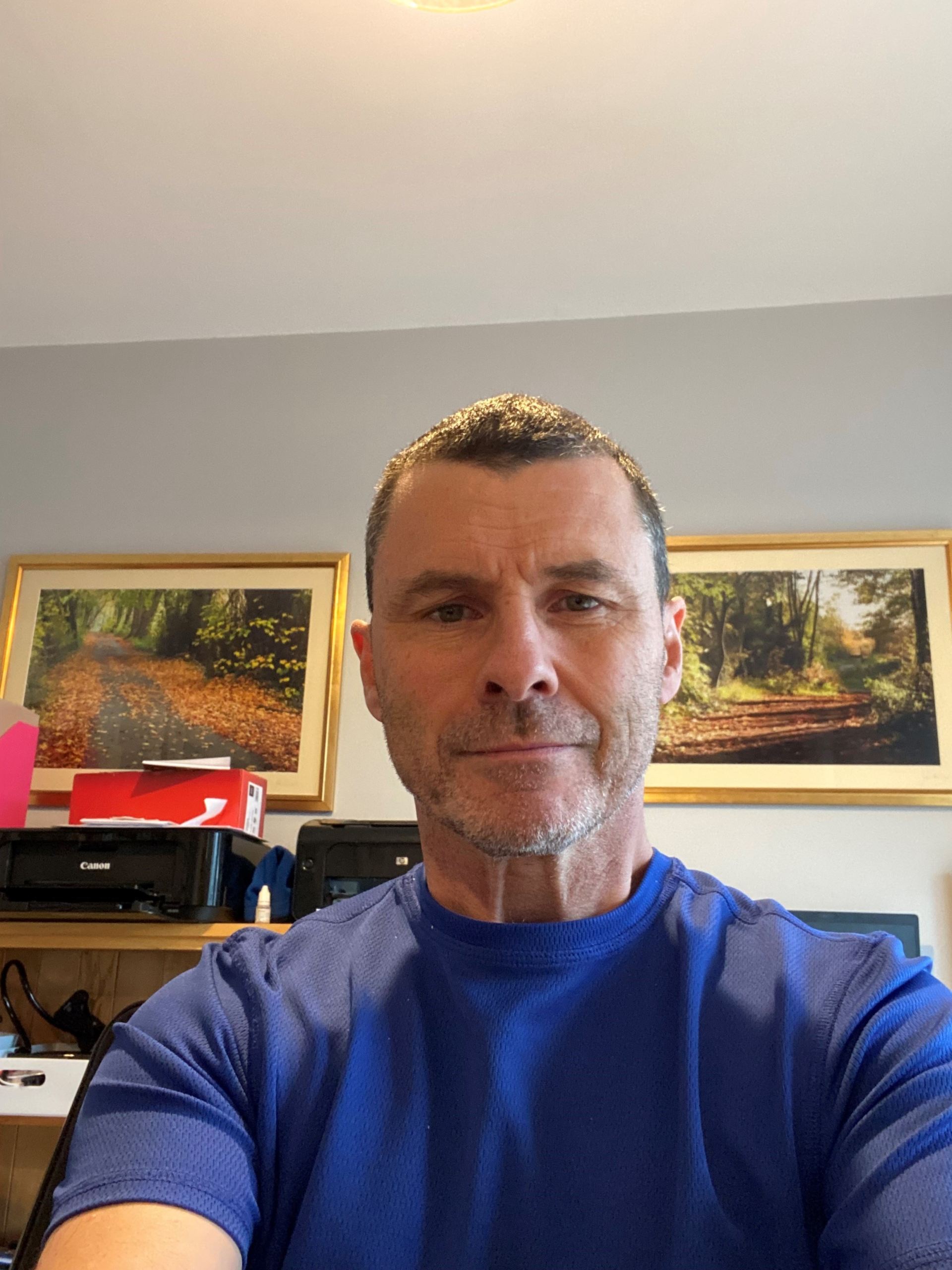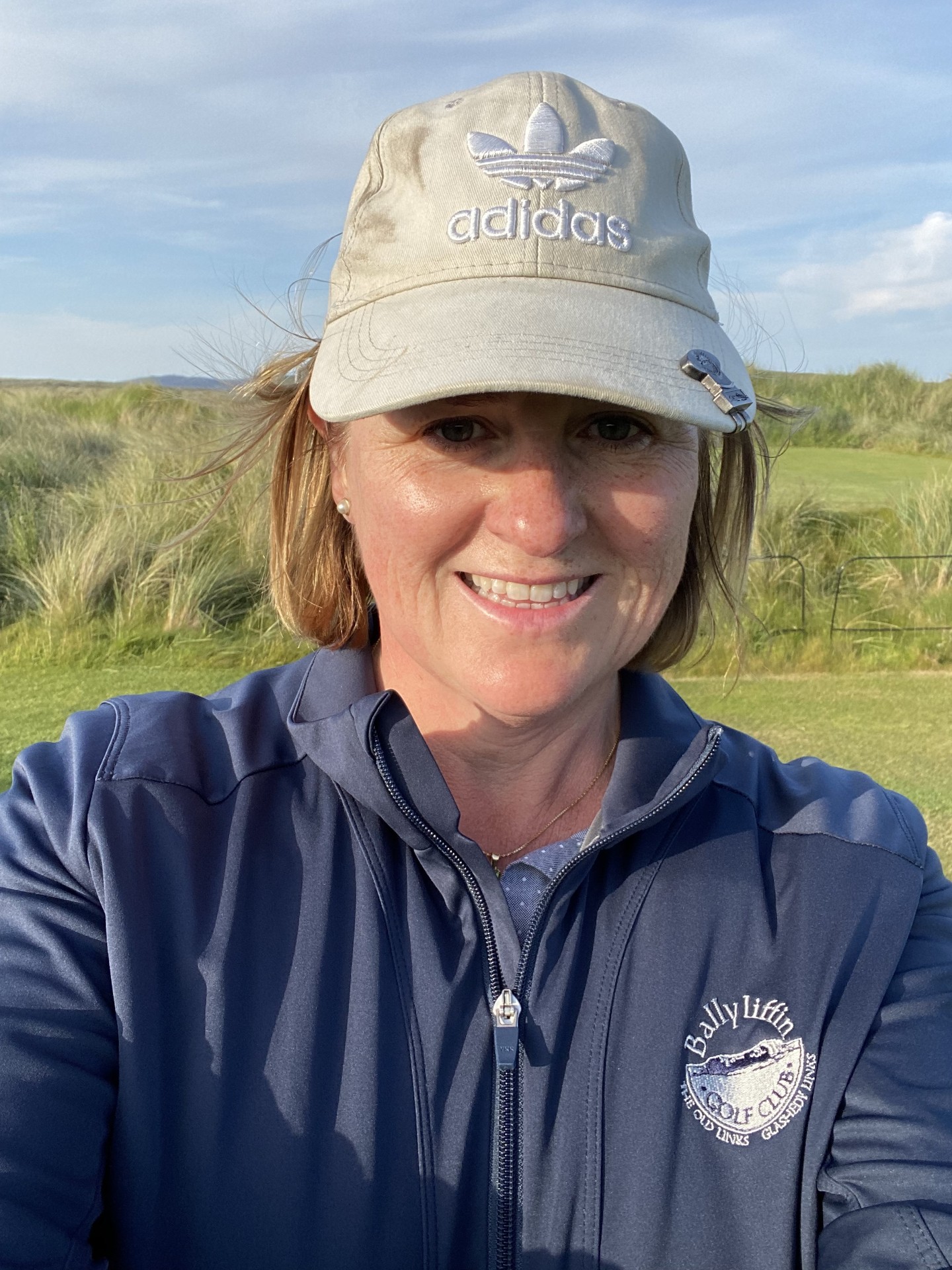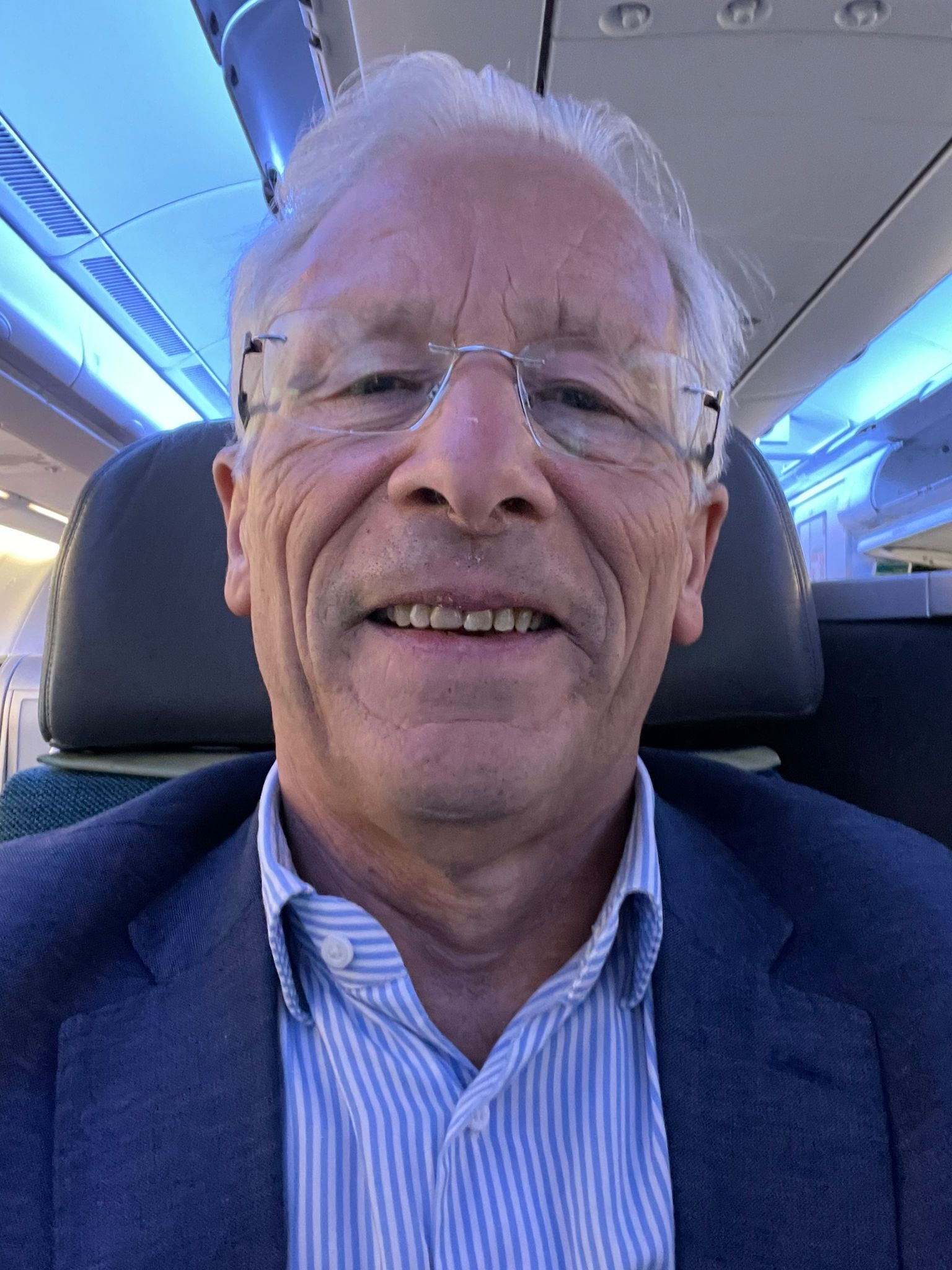Watch this video of Dr Ronan Kearney, Consultant in Sports & Exercise Medicine, “Management of Common Golf Related Injuries”
This video was recorded as part of SSC’s Online Public Information Meeting, focusing on ‘An Evening for Golfers’

Dr Ronan Kearney [FFSEM, MFSEM (UK), MB, BCh, BAO, MICGP, MSc (SEM), Dip (MSK, FIFA, Occ. H)] is a Consultant Sports and Exercise Medicine Physician at the UPMC Sports Surgery Clinic, Dublin alongside sporting roles with Sport Ireland Institute, European Tour Golf and Louth GAA.
He completed undergraduate medical training at the Royal College of Surgeons Ireland. After working across a number of Orthopaedic and Emergency Medicine roles in Ireland and Australia, he completed an MSc in Sports and Exercise Medicine at Trinity College Dublin. Subsequently, he undertook General Practice training at RCSI/Dublin before completing Higher Specialist Training in Sports and Exercise Medicine with the Faculty of Sports and Exercise Medicine (RCSI/RCPI).
Dr Kearney has worked as Team Doctor across a number of sports, including Soccer (Rep. of Ireland Men’s U18, U21, Rep. of Ireland Women’s U16, Women’s National Senior Team, Shamrock Rovers FC), Rugby (Trinity Rugby, Easts Rugby Union Brisbane), GAA (Louth GAA, Castlebar Mitchells), Athletics (Sport Ireland Institute, Dublin Marathon Series) and Rowing (Commercial Rowing Club Dublin). He has also been an Expedition Doctor on Mount Kilimanjaro and has worked as Medical Officer at multiple European Tour golf events.
He is an Associate Editor for the BMJ Open Sport and Exercise Medicine Journal, having previously held the role of Lead Author for Education from other Journals sections of the British Journal of Sports Medicine. He is a Sports and Exercise Medicine lecturer to the MSc Sports and Exercise Medicine (Trinity College Dublin) and Paramedic Studies (University of Limerick) postgraduate courses. He is Chairman of the Gaelic Athletic Medical Association, Secretary of the Football Association of Ireland Medical Committee as well a member of the Irish Society of Lifestyle Medicine and FSEM Education Committee.
My name is Ronan Kearney, and I’m a Sports and Exercise Medicine Consultant in the UPMC Sports Surgery Clinic. As we know, the UPMC Sports Surgery Clinic is made up of the main hospital as well as the Sports Medicine Department about 100 metres up the road. In that Sports Medicine Department, we have a number of consultation rooms, an injection room, a high-tech gym and rehabilitation facilities, and we’re lucky enough to have a full multi-disciplinary team with both Sports Medicine Consultants, specialist Physiotherapists, strength & conditioning coaches and player mechanisms all working together with our radiology colleagues in the main hospital.
Outside of the UPMC Sports Surgery Clinic, I’m lucky enough to work with a number of sports. I’ve worked in Golf both on the DP World Tour as well as the Legends Tour. I also work in GAA and the high-performance units in the Sports Institute Ireland, mainly with athletics preparing for Paris 2024.
Working in golf is very rewarding, and I hope I have learnt some things working in the league of golf that I can apply to the recreational golfer also. Today we’ll speak on a number of different golf-related injuries. It is first important to understand some of the basic biomechanics in the golf scene that relates to injury, as oftentimes, injuries are a result of biomechanics. Lower back pain is the most common golfing injury in both recreational and professional golfers, followed by the shoulder and elbow.
Firstly the golf swing is biomechanically fascinating in many ways; it is so impressive to see a top golfer show the control, coordination, power and precision to hit the ball. It is made up of a number of stretch-shortening cycles of muscle contractions. These are an important chain of events, with each cog in the wheel providing an important role, trying to ensure that the little white ball goes to the intended target. It is important to note that any weak link in the chain can have knock-on effects which can lead to either injury or, eventually, poor performance.
At each stage in the golf swing, there are different groups of muscles working in different ways. Not to get too bogged down by the different muscle groups, but if one or some of these groups are not working as normal for whatever reason, there can be knock-on effects that can lead to problems.
To give a background on the three more common mechanics in golfing that you might hear is the X-factor, Crunch Factor and Reverse- C we will speak a little more about this in the lower back section, but the X-Factor is a really a separation between the upper trunk and the pelvis at the backswing and during the downswing seen in figure A here. The Crunch Factor is a combination of the lateral complexion and axial angular velocity that impacts an early follow-through seen in the middle picture here. Reverse-C is the follow-through and trunk hyperextension; we will come back to that a little later.
Lower back pain in golf is very common; almost a third of amateurs and over half of professional golfers suffer from lower back pain at some stage. There are a number of factors that lead to back pain in golf; some are non-modifiable ones that we can’t change. Unfortunately, increasing age leads to an increased risk of lower back pain. If you have previously had episodes of Lower back pain in the past, you are more likely to have future episodes, and unfortunately, if you are male, you are more likely to have lower back pain also.
These are the modifiable risk factors for lower back pain in golf, and these are the factors that can be changed. This is where management can help. We know that BMI is where obese people or overweight, which leads to an increased risk of lower back pain, poor strength, flexibility and coordination can also lead to lower back pain in golf. We will come to this a little bit later. Swing biomechanics play a role, and interestingly enough, a study has shown carrying a bag can increase the risk of lower back pain also. Back to the swing again, the swing is a repetitive motion with large angular velocities and loading force that is placed on the spine. We know the distance off the tee is associated with lower scores, and in professional games, it’s associated with higher earnings which many golfers are really trying to push for.
As a result, there has been an increase in golfers trying to adopt a modern swing technique, and there is much debate in golf, as you would all know about which swing is better. There is no right or wrong answer here in my eyes, and everyone is to be treated on an individual basis anyways. We know that generating more power and speed is associated with greater distance, but this can come at a cost; if the biomechanics or strength and conditioning are not right, this can lead to problems.
These are three different types of swing biomechanics that have been associated with lower back pain. An early extension where the hips come forward into the hand space as seen in the first box below, reverse C, which is at the end of follow through, which we get an increased lumbar extension and then a reverse back spine angle at the end of a back swing where again we see an overextension of the lumbar spine on the left-hand side. Overextension on the right-hand side suggests a crack spine angle, and again, this has been suggested in the literature.
With regards to swing biomechanics, a large review of biomechanics and lower back pain suggested that a number of factors in the swing can lead to lower back pain, I don’t want to get too technical here, but some are shown on the screen. The important part here is such mechanics are important to be identified, and those struggling with back pain are to work closely with their golf professional or coach to address these issues in their swing is an important factor in managing lower back pain in golf.
Flexibility also plays a role in management here, so we know that increasing and improving hip, shoulder, lumbar and thoracic range of movement can be a modifiable risk factor for lower back pain in golf, so another area we would focus on.
It is obvious that strength plays a large role in both the prevention and management of golfing injuries. The professional game has transformed over the last decade, with most of the top golfers putting in a huge amount of time and effort into strength and conditioning. The understanding of such interventions has led to a reduction in injury risks and improvements in performance. I think this principle can also be applied to recreational golfers.
These are just a number of types of causes of lower back pain that we commonly see in the UPMC Sports Surgery Clinic. They can be facet joint problems, nerve root impingement, disc problems, lumbar stress fractures common in the teenage athlete and sacroiliac joint problems.
So the importance here is that I suppose there are a number of differential diagnoses or reasons for the pain. To get to the root of the problem, the most important part of this really is proper thorough history and clinical examination; we are lucky that the UPMC Sports Surgery Clinic have a number of objective measures that we can test in terms of strength, flexibility and biomechanics related to golf injuries. We have excellent imaging facilities as well, which are a huge help when managing such injuries.
In terms of specific management, it will really depend on the diagnosis itself, and in general, these are the key core topics that need to be addressed with lower back pain in golf. Educating the person on injury and on the ways they can manage it is such an important part. Weight loss, as we mentioned, BMI earlier, is a modifiable factor. Improving muscle strength, control exercises and flexibility is a huge key part to play. Swing biomechanics would be mentioned working alongside the golfing professional with this to ensure there is nothing in the biomechanics side of things leading to the issue in the first place and then early golf-specific rehabilitation.
At the UPMC Sports Surgery Clinic, we are lucky enough to have access to a broad range of secondary management options if the first-line options aren’t working. Some of these options help the golfer provide a window of opportunity where pain doesn’t prevent the progression of the rehab.
Now to focus on shoulder injuries, which are a little bit less common than lower back pain in golf, but then again, eighteen percent of golfers in their lifetime are likely to have a shoulder injury. Mostly because of overuse or repetitive strains rather than an acute traumatic injury, more common in the lead shoulder, which is the left shoulder in right-handed golfers and the right shoulder in left-handed golfers. There are a number of certain risk factors for shoulder use in golf, such as overload, where there might be a deficit between muscular strength and flexibility and overuse.
When we look at the golf swing, the shoulder obviously moves through a significant range of movement through the swing. In the back swing on the left shoulder, there is large shoulder adduction and right shoulder external rotation before an explosive follow-through with left shoulder external rotation, left shoulder abduction and right shoulder adduction. So, again looking at the mechanics of the swing is important to see at what stage of the swing the pain occurs.
Potential shoulder injuries in golf include Subacromial impingement, Rotator cuff tendinopathy, a rotator cuff tear, acromioclavicular joint arthrosis, shoulder joint osteoarthritis and shoulder instability. There are many different types of shoulder problems involved.
Some symptoms to look for; so as we mentioned, where in the swing is your pain is an important question to ask yourself; the painful arc at what degree of movement of your shoulder brings on the pain gives us a good idea of where the source of the pain might be coming from, did you have any weakness in overhead activities, if you are struggling to lie on your side at night, or the movement of the shoulder joint just isn’t right, or if you have some pain or pins and needles down your arm and if your shoulder feels not fully stable or it feels like it is subluxing. These are important symptoms that give us a good clue in terms of what’s the cause of the pain or the symptoms.
Again looking at some investigations for shoulder injuries in golf, as I mentioned before, a really clear and thorough history and clinical examination give us a really good idea of where the issue lies. Strength assessment and flexibility assessment, as well as biomechanics, are important facets, especially in the developer, to address potential areas for improvement. Again imaging plays an important role in many situations where access to MRI is often used, and there are other injection options and other diagnostic options that we do have available to ourselves in the UPMC Sports Surgery Clinic.
Management of shoulder injuries and sports again brings us back to the main key facets; as I said before, management will really depend on the type of injury that you do have and what we really try to address are these key facets firstly. Educating on the injury itself and the importance of self-management, some strength-based individualized rehabilitation, and movement mechanics, as we have already mentioned in the shoulder, is important, as well as specific golf rehabilitation. Medication can sometimes be helpful as well, but we don’t over-rely on these.
We do have at our disposal a number of other ultrasound-guided injection therapies, including platelet-rich plasma, Corticosteroid, potential Nerve blocks or hydrogenation.
What is Platelet Rich Plasma or PRP? Many of you might be wondering if it is a form of regenerative medicine that harnesses the body’s ability to increase growth and healing factors to improve injury recovery. How it works is a blood sample is taken during a blood test. It is inserted into a centrifuge and spun down. Then the PRP portion, which contains the concentrated healing cells and factors, is injected actively under ultrasound guidance to target the tissue. PRP is shown to have less of a side effect profile than the traditional steroid injections in many cases, and in many cases, it is shown to outperform the steroid injection in the long term for many of the musculoskeletal side conditions, and we use it quite a lot in the UPMC Sports Surgery Clinic.
Elbow pain in golf, like shoulder pain in golf, elbow pain is mainly an overuse injury rather than an acute injury, and it happens in females more than in males. Most of the time, it is actually the lateral side of pain, so pain at the outside of the elbow typically turned ‘tennis elbow’ generically. In many ways, tennis elbow should be called golfers elbow, given the numbers.
There are a number of risk factors for elbow pain in golf, including overloading the area; if your grip is too tight or slippy, this can affect how tight you grip the club, and it will have an effect on the tension and force through the elbow. If you are hitting the ground before the ball or hitting some bad shots, unfortunately, that can lead to overuse elbow injuries and impact through the elbow, and some swinging changes that happen over too short of a period of time can also lead to overuse injuries in the elbow. It is important to consider the neck when having elbow pain, and this is often the source of the referred.
On the mechanic side of things and elbow pain in golfers, we talk a little bit about the wrist flexor burst, which is really that wrist hinge at impact and those with an increased risk hinge put more force through the lateral elbow in the lead elbow or the lateral side of the elbow in the lead side of the elbow and then the medial side forces in the trail elbow are increased with this increased risk hinge. It is so important to bring this into your grass swing over a slow period of time, or if you are having elbow pain, just ask your golf professional to have a look at your risk hinge and to see if there is an issue there.
Some of the different causes of elbow pain in golfers, so we will speak more on Epicondylopathy, which is your epicondylitis; tendon tear can also lead to elbow pain and golfers tendinopathy, nerve entrapment, elbow arthritis and, as I mentioned, some referred pain from the neck. There is a number of different types of causes of elbow pain in golfers, not just tennis elbow or golfers elbow. As I mentioned, these are the two commoner causes of elbow pain in golfers. Typically it is a golfers elbow on the outside of your elbow, or it is a tennis elbow if it is on the inside of your elbow.
Some symptoms to look for are a pain in wrist movements, burning forearm pain, pins/needles in the forearm, weakness in wrist movements, stiffness in elbow movements and the next day after activity. Elbow pain is another one to look for, which might be suspicious of your epicondylopathy or tendinopathy.
Similar to shoulder and lower back investigation, start with a thorough history and clinical examination, strength assessment, flexibility assessment, biomechanics assessment and further imaging if required.
After we have got to the root of the diagnosis of your elbow pain, we progress on to management. Our key main topics, as we have spoken about already, are education, strength-based rehabilitation, biomechanics and golf-specific rehabilitation. There is some evidence that suggests that support braces can be helpful for tennis elbow, and increasing grip size can potentially improve elbow pain as well, again something to consider on an individual basis.
Second-line options if first-line options are not working include medication options as well as ultrasound-guided injections such as PRP, corticosteroid and nerve hydro-dissection. There is a number of different options if the original first option didn’t go to plan.
We often use Extracorporeal Shock Wave Therapy in golfers or tennis elbow. How shock wave works are the shock waves that carry energy to the injured tissue, the shock waves can then generate tissue responses that can produce many advantages such as pain relief, increased blood flow, cell growth and, where needed, disruption of calcium deposits in the tissue a combination of these effects have leads to increase recovery and with specific rehab exercises. It can be an additional management option for you.
| For further information on this subject or to make an appointment, please contact sportsmedicine@sportssurgeryclinic.com |























